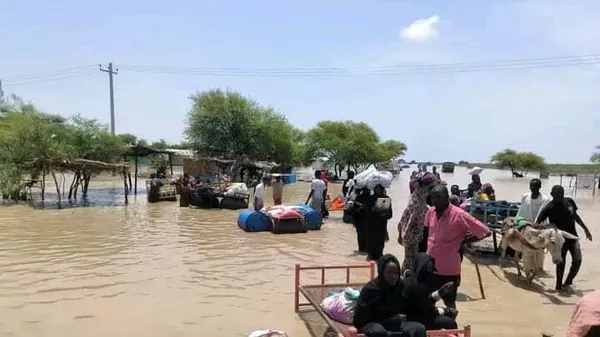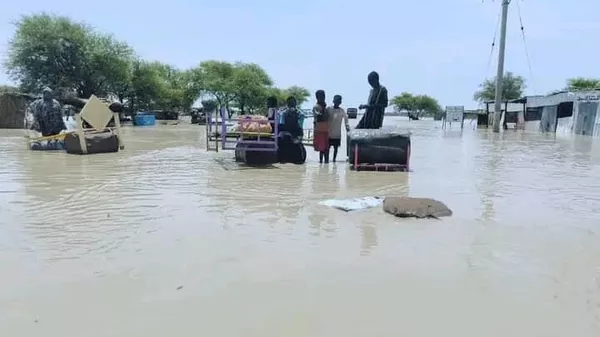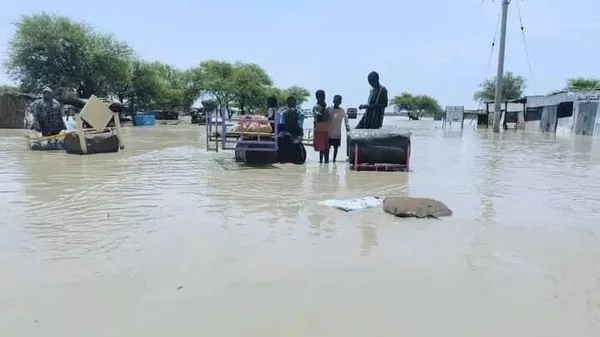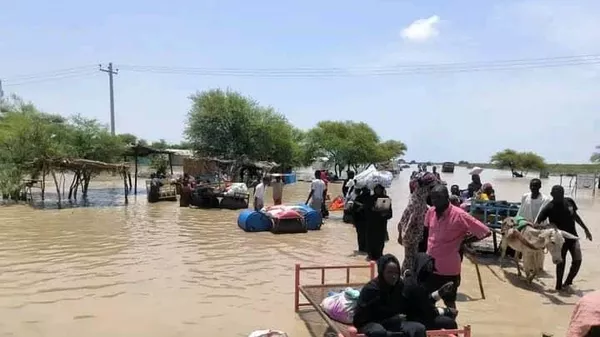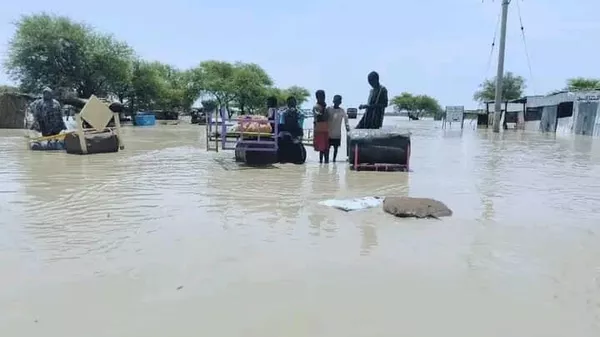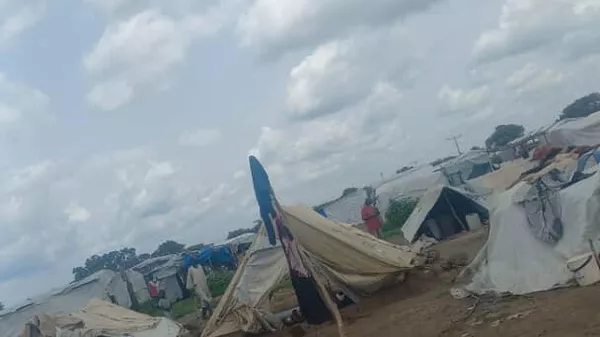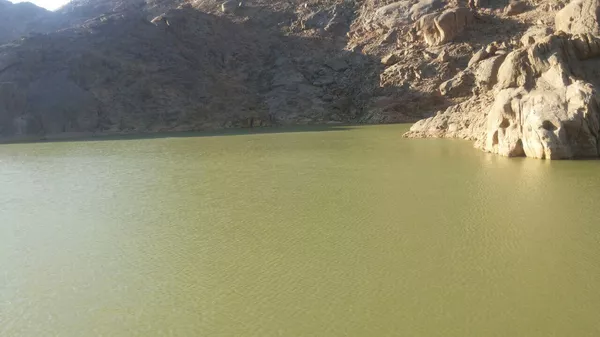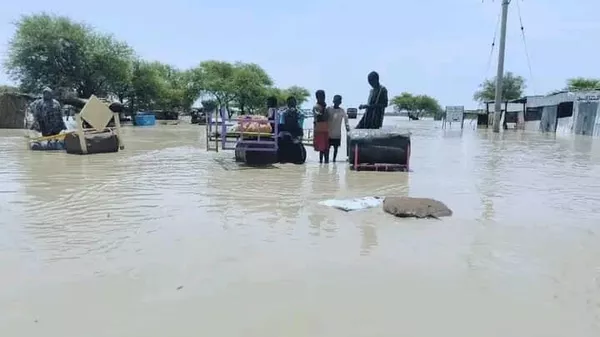Nature has not left the displaced Sudanese citizen since the outbreak of the war between the Rapid Support Forces and the army, where rain fell and turned into unprecedented torrential rains and floods, but rather demolished dams and wiped out dozens of villages completely from the ground, leaving behind a humanitarian, environmental and health tragedy in addition to the bitter reality.
What did the floods do to Sudan, why did the “Arbaat” dam collapse, how do the people who were surrounded by water live, and the latest news of hundreds of missing people whose villages were equal to the ground?
Nidal Mahdi, a humanitarian and relief activist in Sudan, said, “The violent floods that swept through northern and eastern Sudan and various states in the country left behind new tragedies and disasters, in addition to the catastrophic humanitarian situation that citizens are living due to the war.”
Massive floods
She added in her interview with the agency “Sputnik”: “As a result of the heavy rains that turned into floods and torrential torrents, there were many collapses of homes and the disappearance of their inhabitants, in addition to that these torrential torrents caused collapses in the dams, whether completely as in the dam of squares or partially in some areas, which led to the disappearance of villages completely from the surface of the earth, where these torrents were included under the name of the flood as a result of their intensity and density.”
Mahdi continued: “There is confirmation that Sudan has never experienced such torrents and floods of this magnitude and strength, as these torrents swept village after village and completely hid them from the surface of the earth and washed away with them hundreds of missing people, and material losses reached thousands of homes and countless numbers of deaths so far, as all means of rescue, food and water were cut off in many sunken cities.”
Massive floods
She added in her interview with the agency “Sputnik”: “As a result of the heavy rains that turned into floods and torrential torrents, there were many collapses of homes and the disappearance of their inhabitants, in addition to that these torrential torrents caused collapses in the dams, whether completely as in the dam of squares or partially in some areas, which led to the disappearance of villages completely from the surface of the earth, where these torrents were included under the name of the flood as a result of their intensity and density.”
Mahdi continued: “There is confirmation that Sudan has never experienced such torrents and floods of this magnitude and strength, as these torrents swept village after village and completely hid them from the surface of the earth and washed away with them hundreds of missing people, and material losses reached thousands of homes and countless numbers of deaths so far, as all means of rescue, food and water were cut off in many sunken cities.”
Scarcity of relief materials
In turn, the Sudanese Chancellor, Lubna Mohamed Abdel Rahman, said in her interview with “Sputnik”: “We started about two weeks ago a number of initiatives to help those affected by floods and floods, as well as those affected by the collapse of the Arbaat Dam, which included many areas affected by the flood, noting that there is a great need in some remote areas whose homes were washed away by the floods to tents, at a time when many ensured the provision of food and some medicines, and we hope that these affected areas will receive some attention from international organizations and the United Nations.”
Dam collapse
For her part, Dr. Nawara Abmohamed Bavli, a researcher at the Faculty of Community Development, Red Sea University, and president of the Sorkat Organization in Sudan, said, “The collapse of the reservoir of four of the events that shook the eastern region of Sudan and the Red Sea state.”
She added in her speech to “Sputnik”: “The Arbaat Dam is located in the north of Port Sudan in an area that is considered a stream for seasonal torrents that come as a result of summer rains west of the Red Sea mountain range, and the water was stored by the implementation of the Arbaat Dam by Danfodio implemented in 2003 with a height of 24 square meters with the placement of openings or gates for the exit of silt through, and thus the idea of the dam is to provide drinking water to the residents of Port Sudan, which suffers from a scarcity of drinking water.”
Bavli continued: “When the dam began to absorb the first batches of flood water and its storage capacity was about 15 million cubic meters, the dam faced the problem of gates that failed to remove silt, but rather closed permanently without intervening with maintenance or follow-up.
The silt height of the dam reached about 10 meters, but before the collapse of the dam, studies indicated that the silt height reached 19 meters out of a height of 24 meters.”
Gross negligence
Bavli pointed out that “with the rise in the level of silt behind the body of the dam, here began the disaster, which lies in the high level of rainwater that enters the dam and works on the flood due to the filling of the dam, and then destroys the agricultural land that lies east of it in the delta for agricultural use and headed to the Red Sea, which borders the dam from the east.”
Bavli said: “We, as the Sorkanat Leaders for the Development of Women and Society, took an initiative to remove silt and spoke to the government agencies about the disaster that the region faces in the event of a failure to respond to the evacuation of the dam from the silt, and then through the Arbaat Dam Committee, of which I am a member, we wrote a report on the dam problem and immediate strategic solutions.”
“With the slow response and the lack of awareness of the magnitude of the problem, heavy rains fell in the west of the Red Sea mountain range, and the amount of water that flooded the dam was very large, which led to the explosion of the dam, which contains 19 cubic kilometers of silt, which prevented it and the water that waters the thirsty from the Port Sudan community,” Bavli said.
Sudan was exposed to an unprecedented disaster, represented by the collapse of the “Arbaat” dam in Port Sudan, as a result of the torrential rains that fell heavily on the Sudanese states since the beginning of this month, causing floods that flooded entire villages, killed dozens, and exposed more than 100 people to loss.
The silt-laden water wiped many villages off the face of the earth, while citizens took refuge in the mountains to save their lives.
Eyewitnesses reported that “dozens of bodies were washed away, some of them lying on puddles and roadsides, and that the situation is currently similar to the disaster of “Hurricane Daniel”, which hit the Libyan city of Derna, in September 2023, according to the newspaper “Sudani”.
The war broke out in Sudan on April 15, 2023, between the army led by Abdel Fattah Al-Burhan and the Rapid Support Forces led by Mohamed Hamdan Daglo (Hemedti), in different areas of Sudan, mostly concentrated in the capital, Khartoum, leaving hundreds of civilians dead and wounded.
Arab, African and international parties brokered a ceasefire, but these mediations did not succeed in reaching a permanent cessation of hostilities.
Source:Sputnik

